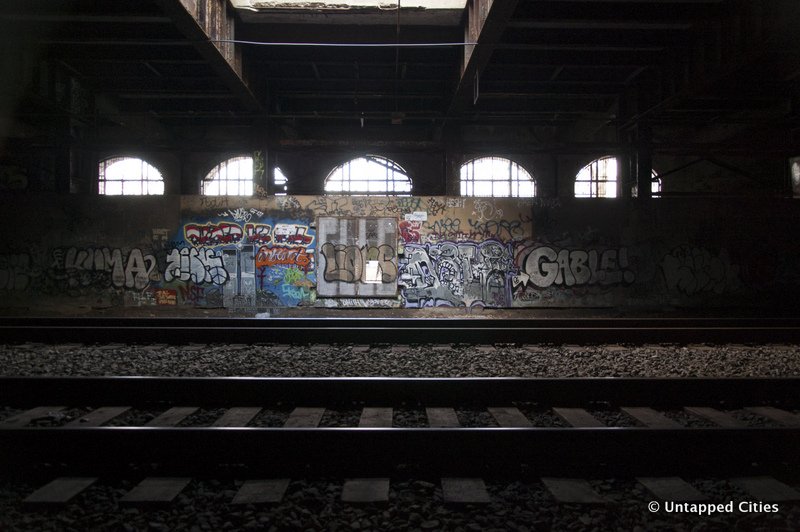
Tonight, July 21st, Ed Hamilton, author of Legends of the Chelsea Hotel will read from his new small press fiction book, The Chintz Age: Tales of Love and Loss for a New New York at 6:00 pm at the Jefferson Market Library in Greenwich Village. We have below an excerpt from the book about the famed Freedom Tunnel, the urban exploration hotspot underneath Riverside Park.
While The Chintz Age focuses on artists and their response to gentrification, it’s also a book about nostalgia for old New York, and the longing for a fabled past that is somehow better than the present. In seven stories and a novella, Hamilton takes on the clash of cultures between the old and the new, as his characters are forced to confront their own obsolescence in the face of a rapidly surging capitalist juggernaut. Ranging over the whole panorama of New York neighborhoods—from the East Village to Hell’s Kitchen, and from the Bowery to Washington Heights—Hamilton weaves a web of urban mythology. Punks, hippies, beatniks, squatters, junkies, derelicts, and anarchists—the entire pantheon of urban demigods—gambol through a grungy subterranean Elysium of dive bars, cheap diners, flophouses, and shooting galleries, searching for meaning and a place to make their stand.
Miller had heard tales of the Freedom Tunnel, a huge train tunnel running under Riverside Park on the Upper West Side. Though the tunnel, built in the 1930s and used primarily for freight, had once had six tracks, by now all of the tracks save one had been torn up, leaving plenty of real-estate free for amateur architects of all sorts. It was these enterprising homesteaders, the so-called “Mole People,” victims of various forms of oppression—real or imagined—at the hands of surface dwellers, who had given the tunnel its name. “How do I get there?” Miller asked excitedly.
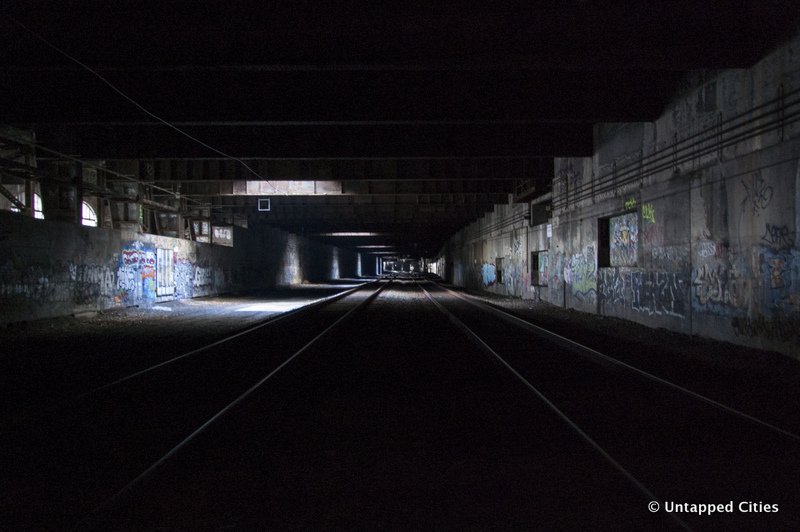
Though the trains in Brooklyn were running sporadically due to the holiday schedule, Miller lucked out and caught a train going in the right direction. When he got off to transfer at Times Square, he became momentarily confused by the rush of people, but he eventually found his connection. Getting off at Seventy-Second Street, he walked down a flight of stairs to the lowest level, consulted the map that Herman had sketched for him on an old shirt liner, then wandered around until he saw the graffiti-tag that read, “Freedom”—in a nearly impenetrable scrawl—and climbed down the ladder onto the tracks. A hundred yards down the tunnel Miller found the drain pipe indicated on the map, and, stepping up on a handy milk crate, hoisted himself up and clambered in. After crawling a short distance on his hands and knees, he found himself in what appeared to be an abandoned switching station. Exploring the room with the dim beam of his flashlight—which Herman had parted with reluctantly—Miller stumbled through a pile of donut boxes, disturbing a nest of rats. The frightened rodents scattered, squealing, in all directions.
Exiting through a rusted-open steel door, Miller walked down a long corridor overhung with cobwebs, then climbed, via a fixed ladder, into a drafty ventilation tube. Although this would have been an odyssey of terror for most people, Miller was in his element here, and though at first he would slip, moment to moment, into the delusion that he was back in the army, gradually his mind began to clear for longer and longer stretches at a time. I’ve still got it, Miller thought proudly of his tunneling skills, as, after a bit of initial stiffness, his muscles re-acclimated to the cramped conditions. Though it was often close to pitch dark, Miller used his flashlight only sparingly as he crawled through the various sewer pipes, drain pipes and access tunnels, his hands, clothes and even his face getting filthy with black grime. Sometimes consulting his written directions, which were wrong on a number of points—Miller made his way through electrical rooms, ventilation tubes, sub-basements, boiler rooms, trash rooms, and even ancient structures that looked like mine shafts, dry creek beds and catacombs. Luckily, the way had been clearly marked by generations of helpful graffiti artists.
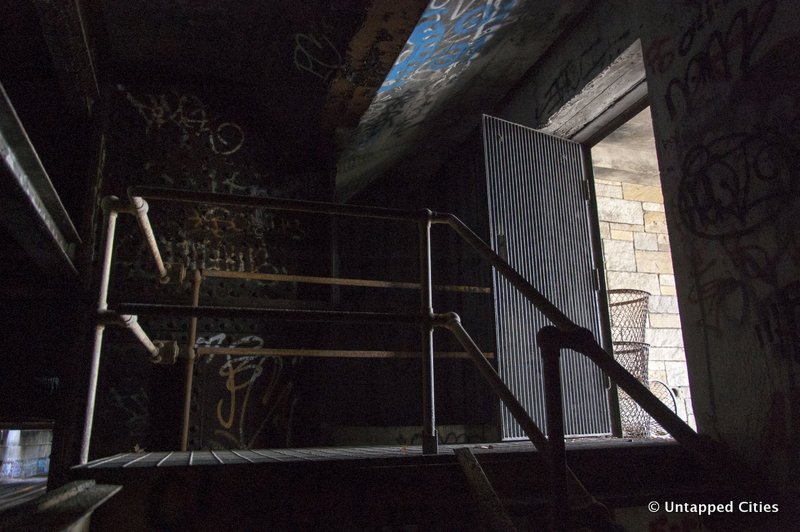
Finally, Miller shouldered open a heavy metal door, and, with a sense of exhilaration, emerged into an immense room, rectangular in shape, with a ceiling thirty or more feet high. As the last rays of the declining sun came slanting through a grate far above, the tunnel, cave-like, though in size more like an aircraft hanger, stretched far off in either direction into the black vastness. Down the center of the trash-strewn expanse ran the only surviving rail. It was colder than it had been in the smaller passageways, and there was a slight breeze blowing down the big tunnel, bearing with it the crisp aroma of a wood fire. Having no other clues to go by, Miller began walking along the track, the gravel crunching underfoot, upwind toward the source of the smell. Before it was fully dark, Miller could just make out the cryptic illustrations that popped up here and there on the tunnel walls, variously like cave paintings or splashes of expressionistic modern art. The beams of his flashlight fell on the occasional scurrying rat, and once, as Miller reacted to an inhuman yowl, upon the demonic green eyes of an emaciated cat perched atop an old chest of drawers. Momentarily frozen in the light, the cat sprang from its berth and dashed for cover behind a pile of rubbish.
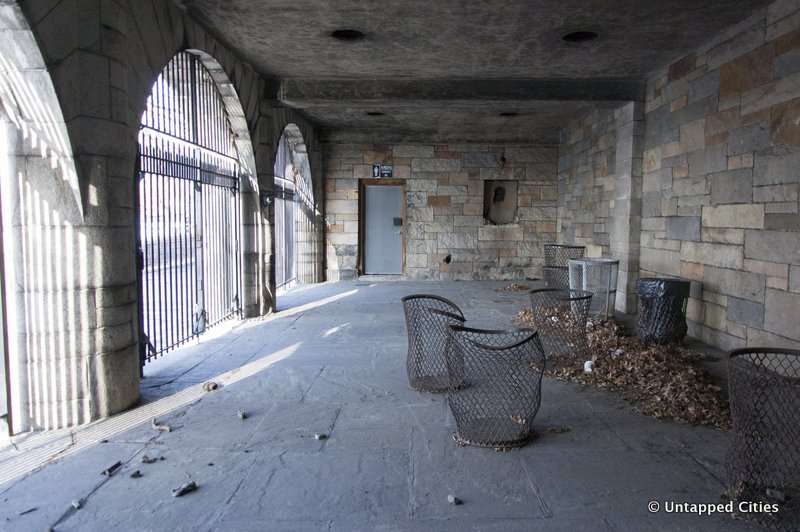
A warm glow in the distance soon resolved itself into the fire Miller had smelled, and presently he came upon its source, a lean-to constructed of plywood and plastic tarps, with a hole in the roof to let out the smoke. Similar fires burned in other shacks, some of which were quite elaborately constructed, and which became more numerous as the elderly outsider progressed into the heart of the settlement. Space heaters and even TVs gleamed as well, as the enterprising denizens of this parallel civilization had run lines down from lamp posts on the surface.
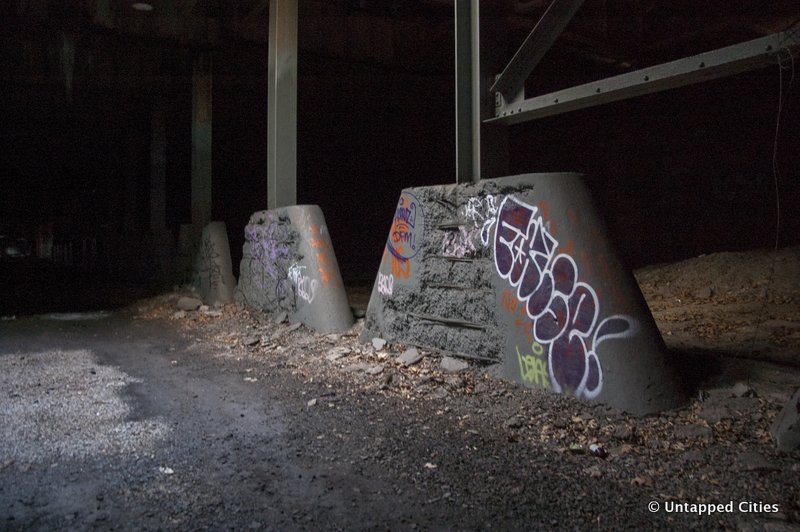
The settlement seemed to Miller a throwback to the shantytowns of the Great Depression—which he had lived through as a child—or, even further back, to a medieval village or even a stone-age camp. And yet it was distinctly post-industrial as well, a parasitical growth sprung up to harvest the detritus of the vast urban metropolis above. What strange race had constructed these dwellings: trolls of fable or post-apocalyptic mutants? Behind the shabby walls of one of the shacks, Miller sensed a living presence, and through a hole in the tarp caught a glimpse of a shadowy figure moving around inside. Creeping closer for a better look, he kicked a tin can and set off a barking dog, who, straining at his chain, communicated his alarm to several other dogs further down the tunnel. But despite the racket, no one came out to investigate, and soon the dogs accepted Miller’s presence and settled back down to gnaw their bones.
Miller was too shy to approach any of the dwellings, and besides, he didn’t know the protocol of this new race: should he knock on the door, call out a greeting, or simply barge in? Miller was hungry, thirsty, but most of all bone tired, and so he walked back to a spot between two shanties where he had seen an old mattress propped against the tunnel wall. He kicked the mattress to test it, and, finding it suitable, pulled it down from the wall. Lying down and drawing his legs up to his chest, the old man shivered once or twice, then dozed.
Only to be rattled awake by the cacophonous clatter of a passing freight train. Momentarily unsure of his whereabouts, Miller wondered at first if he had died. Then he decided that his muscles ached too much for that. As he stretched his legs out painfully, he heard people stirring nearby, talking, even singing. His mind was the clearest it had been in years, and, remembering where he was, he felt the burden of his cold, domineering wife, his selfish, idiotic children, his shitty job, the cut-rate nursing home, in fact all of his former life, lifted from him and bourn away on the breeze. He was filled with a certain amount of fear and trepidation, but more so with a sense of excitement and giddy expectation. Though he realized that this new world would not be a heaven, neither, in all probability, would it be a hell. Suddenly reinvigorated, he was once again a young man camping in the woods, his fellow soldiers chatting and laughing nearby. He smelled meat grilling over a fire, and got up to see if there would be enough for him.
Get the book The Chintz Age: Tales of Love and Loss for a New New York on Amazon. Next, see more photos of the Freedom Tunnel and read about the Top 10 Secrets of Riverside Park.






